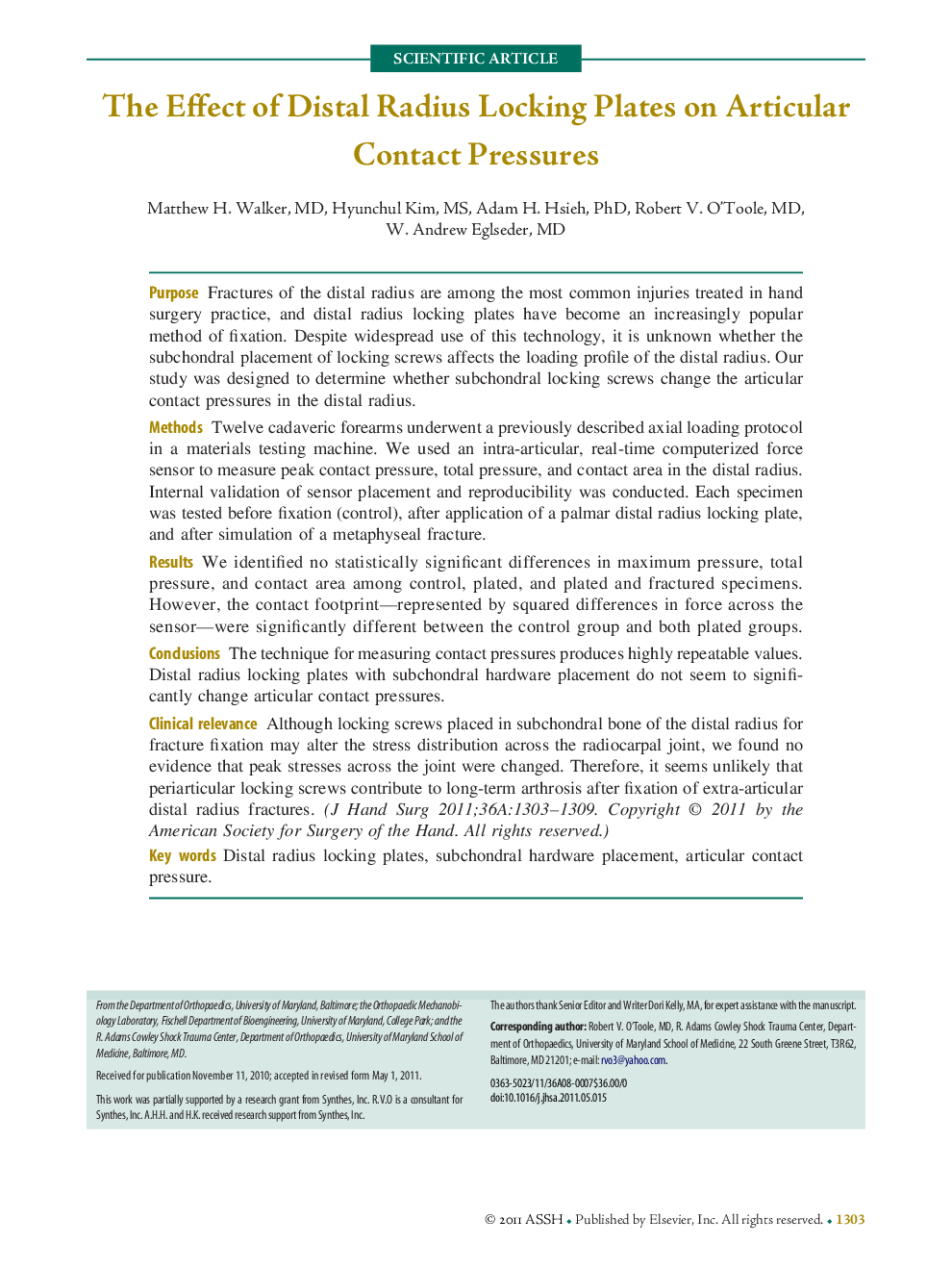| کد مقاله | کد نشریه | سال انتشار | مقاله انگلیسی | نسخه تمام متن |
|---|---|---|---|---|
| 4066936 | 1604405 | 2011 | 7 صفحه PDF | دانلود رایگان |

PurposeFractures of the distal radius are among the most common injuries treated in hand surgery practice, and distal radius locking plates have become an increasingly popular method of fixation. Despite widespread use of this technology, it is unknown whether the subchondral placement of locking screws affects the loading profile of the distal radius. Our study was designed to determine whether subchondral locking screws change the articular contact pressures in the distal radius.MethodsTwelve cadaveric forearms underwent a previously described axial loading protocol in a materials testing machine. We used an intra-articular, real-time computerized force sensor to measure peak contact pressure, total pressure, and contact area in the distal radius. Internal validation of sensor placement and reproducibility was conducted. Each specimen was tested before fixation (control), after application of a palmar distal radius locking plate, and after simulation of a metaphyseal fracture.ResultsWe identified no statistically significant differences in maximum pressure, total pressure, and contact area among control, plated, and plated and fractured specimens. However, the contact footprint—represented by squared differences in force across the sensor—were significantly different between the control group and both plated groups.ConclusionsThe technique for measuring contact pressures produces highly repeatable values. Distal radius locking plates with subchondral hardware placement do not seem to significantly change articular contact pressures.Clinical relevanceAlthough locking screws placed in subchondral bone of the distal radius for fracture fixation may alter the stress distribution across the radiocarpal joint, we found no evidence that peak stresses across the joint were changed. Therefore, it seems unlikely that periarticular locking screws contribute to long-term arthrosis after fixation of extra-articular distal radius fractures.
Journal: The Journal of Hand Surgery - Volume 36, Issue 8, August 2011, Pages 1303–1309